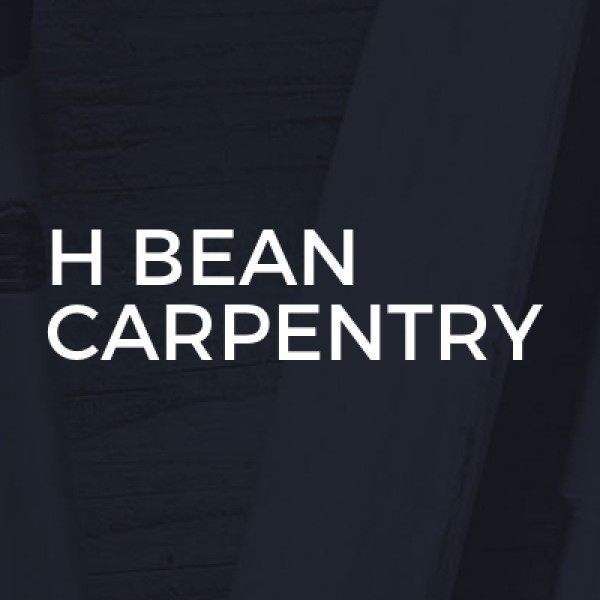Loft Boarding in Islington
Welcome to Crown Roofing And Building, your trusted partner for all your building and renovation needs in New Barnet and across Barnet, L... read more »
Welcome to SAF Construction Consultant, your premier choice for construction services in South Tottenham and the wider Haringey, London a... read more »
Welcome to H Bean Carpentry, your go-to experts for all things carpentry and plastering in the heart of Blackfen. Proudly serving the Bex... read more »
Welcome to Rems Building Services Ltd, your trusted p... read more »
Welcome to O'Donovan Construction Management Ltd, you... read more »
Welcome t... read more »
Welcome to Madeira Construction Ltd, your trusted bui... read more »
Welcome to Brooklyn Block Paving, your trusted trades... read more »
A.N Build Ltd is a reputable constru... read more »
Welcome to TEAL CO Windows and Doors Ltd, a distingui... read more »
Welcome to Addspace Building Ltd, your trusted builde... read more »
Welcome to J Sutton Building Services, your go-to exp... read more »
Ving Building Solutions Limited is y... read more »
Kaz Star Builders Ltd: Premier Builders in Ea... read more »
Welcome to Upmost Lofts, your premier choice for top-... read more »
Welcome to A To Z Builders, your go-to experts for al... read more »
Welcome to Hall and Sons Ltd, your premier choice for... read more »
Welcome to G&J Builders, your trusted partner for lof... read more »
Hoxha Construction UK Ltd, a reputab... read more »
Search Loft Boarding in places nearby
Understanding Loft Boarding in Islington
Loft boarding in Islington is an increasingly popular home improvement choice for residents seeking to maximise their living space. With property prices on the rise, making the most of every square foot is essential. Loft boarding offers a practical solution by transforming unused attic space into a functional area. This article delves into the various aspects of loft boarding, providing insights into its benefits, installation process, and considerations specific to Islington.
The Benefits of Loft Boarding
Loft boarding provides numerous advantages, making it a worthwhile investment for homeowners. Firstly, it significantly increases storage space, allowing you to declutter your home without sacrificing valuable living areas. Additionally, a boarded loft can enhance your property's value, making it more attractive to potential buyers.
Moreover, loft boarding improves energy efficiency by adding an extra layer of insulation. This can lead to reduced heating costs, which is particularly beneficial during the chilly Islington winters. Lastly, it offers a safe and accessible area for maintenance tasks, such as checking roof structures or installing new wiring.
Planning Your Loft Boarding Project
Before embarking on a loft boarding project, careful planning is crucial. Start by assessing the current state of your loft. Consider factors such as the available headroom, the condition of the roof, and the presence of any obstructions like water tanks or chimneys. It's also essential to check if your loft can support the additional weight of boarding and stored items.
Consulting with a professional can provide valuable insights into the feasibility of your project. They can help identify any structural reinforcements needed and advise on the best materials and techniques for your specific loft.
Choosing the Right Materials
When it comes to loft boarding, selecting the right materials is key to ensuring durability and safety. Common materials include chipboard, plywood, and tongue-and-groove boards. Each has its pros and cons, so it's important to weigh factors such as cost, strength, and ease of installation.
Chipboard is a popular choice due to its affordability and ease of use. However, it may not be as durable as plywood, which offers greater strength and longevity. Tongue-and-groove boards provide a seamless finish and are ideal for creating a polished look. Consider your budget and the intended use of the space when making your decision.
Installation Process of Loft Boarding
The installation process for loft boarding involves several steps, each requiring careful attention to detail. Begin by clearing the loft of any debris and ensuring the joists are in good condition. Next, lay down insulation if needed, as this will help improve energy efficiency.
Once the insulation is in place, start installing the boards. It's crucial to leave gaps for ventilation to prevent moisture build-up, which can lead to mould and structural damage. Secure the boards to the joists using screws, ensuring they are evenly spaced for stability.
Finally, consider adding a loft ladder for easy access. This will make it convenient to use the space regularly, whether for storage or other purposes.
Legal and Safety Considerations
When undertaking loft boarding in Islington, it's important to be aware of legal and safety considerations. Building regulations may apply, particularly if you plan to convert the loft into a habitable space. It's advisable to consult with the local council or a professional to ensure compliance with all relevant regulations.
Safety is paramount, so ensure that the loft is structurally sound and capable of supporting the additional weight. Installing a safety rail or barrier around the loft hatch can prevent accidents, especially if children or pets are present in the home.
Cost of Loft Boarding in Islington
The cost of loft boarding in Islington can vary depending on several factors, including the size of the loft, the materials chosen, and the complexity of the installation. On average, homeowners can expect to pay between £500 and £1,500 for a standard loft boarding project.
While this may seem like a significant investment, the benefits of increased storage space and improved energy efficiency can outweigh the initial costs. Additionally, a well-executed loft boarding project can add value to your property, making it a financially sound decision in the long run.
Finding a Professional Loft Boarding Service
Hiring a professional loft boarding service can ensure a high-quality installation and save you time and effort. When searching for a service provider in Islington, consider factors such as experience, reputation, and customer reviews.
Request quotes from multiple companies to compare prices and services offered. It's also wise to ask for references or view previous projects to gauge the quality of their work. A reputable service provider will be transparent about costs and provide a detailed breakdown of the project scope.
DIY Loft Boarding: Is It Worth It?
For those with a knack for DIY, loft boarding can be a rewarding project. However, it's important to weigh the pros and cons before deciding to tackle it yourself. DIY loft boarding can save money on labour costs, but it requires a significant time investment and a certain level of skill.
Consider your experience with similar projects and whether you have the necessary tools and materials. If you're confident in your abilities, DIY loft boarding can be a cost-effective way to enhance your home. However, if you're unsure, it may be best to leave it to the professionals to ensure a safe and successful installation.
Environmental Impact of Loft Boarding
Loft boarding can have a positive environmental impact by improving your home's energy efficiency. By adding insulation and reducing heat loss, you can lower your carbon footprint and contribute to a more sustainable future.
When selecting materials, consider eco-friendly options such as sustainably sourced wood or recycled materials. Additionally, proper ventilation is crucial to prevent moisture build-up and ensure a healthy indoor environment.
Maximising Storage Space with Loft Boarding
One of the primary reasons homeowners opt for loft boarding is to maximise storage space. With a well-organised loft, you can store seasonal items, family heirlooms, and other belongings that would otherwise clutter your living areas.
Consider installing shelving or storage units to keep items organised and easily accessible. Labelling boxes and containers can also help you quickly locate specific items when needed. With a little planning, your loft can become a valuable extension of your home.
Enhancing Home Value with Loft Boarding
Loft boarding can significantly enhance your home's value, making it an attractive feature for potential buyers. A well-executed loft conversion can add up to 20% to your property's value, depending on the quality of the work and the additional space created.
When planning your loft boarding project, consider how it will appeal to future buyers. A versatile space that can be used for storage, a home office, or a guest room is likely to attract more interest and increase your property's marketability.
Common Challenges in Loft Boarding
While loft boarding offers numerous benefits, it can also present certain challenges. One common issue is limited headroom, which can restrict the usability of the space. In such cases, creative solutions like installing skylights or dormer windows can help maximise the available area.
Another challenge is ensuring proper insulation and ventilation. Without these, you risk moisture build-up and potential damage to your home's structure. Consulting with a professional can help address these challenges and ensure a successful loft boarding project.
Loft Boarding Trends in Islington
Loft boarding trends in Islington reflect the area's unique character and the diverse needs of its residents. Many homeowners are opting for multi-functional loft spaces that serve as home offices, gyms, or guest rooms. This trend is driven by the increasing demand for flexible living spaces, particularly in urban areas.
Another trend is the use of sustainable materials and energy-efficient solutions. As environmental awareness grows, more homeowners are seeking ways to reduce their carbon footprint and create eco-friendly homes. Loft boarding offers an opportunity to incorporate these elements into your home improvement plans.
Frequently Asked Questions
- What is loft boarding? Loft boarding involves installing boards over the joists in your attic to create a stable floor, allowing for additional storage or living space.
- Is planning permission required for loft boarding in Islington? Generally, planning permission is not required for loft boarding, but it's advisable to check with your local council for specific regulations.
- Can I board a loft myself? Yes, DIY loft boarding is possible, but it requires careful planning and the right tools. If you're unsure, hiring a professional is recommended.
- How long does loft boarding take? The duration of a loft boarding project depends on the size and complexity of the loft. On average, it can take a few days to a week.
- What materials are best for loft boarding? Common materials include chipboard, plywood, and tongue-and-groove boards. The choice depends on your budget and the intended use of the space.
- How can loft boarding improve energy efficiency? Loft boarding adds an extra layer of insulation, reducing heat loss and lowering energy bills.
Loft boarding in Islington offers a practical and cost-effective way to enhance your home. By carefully planning your project and considering factors such as materials, installation, and legal requirements, you can create a functional and valuable space that meets your needs and adds to your property's appeal.
Send a message







